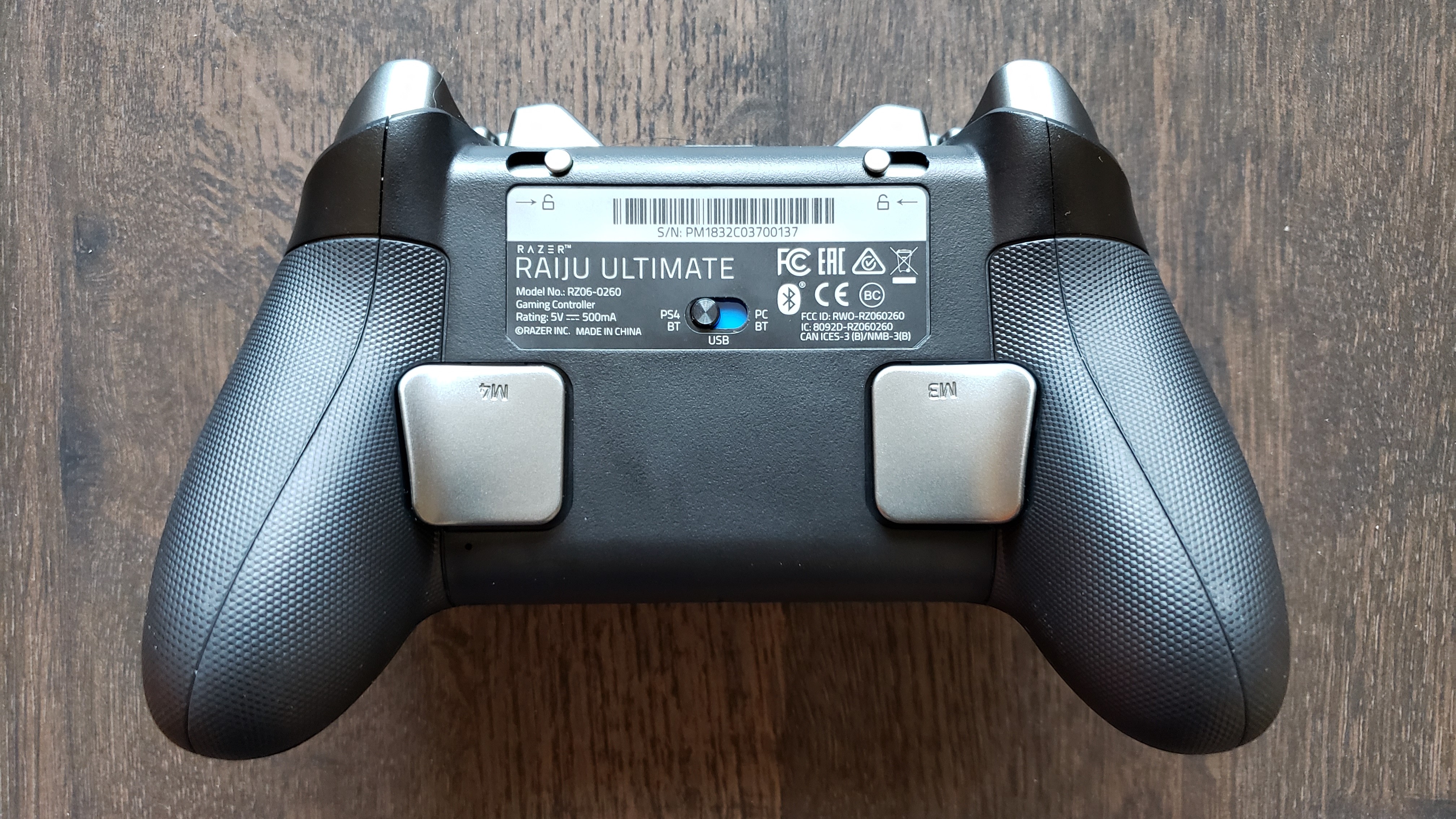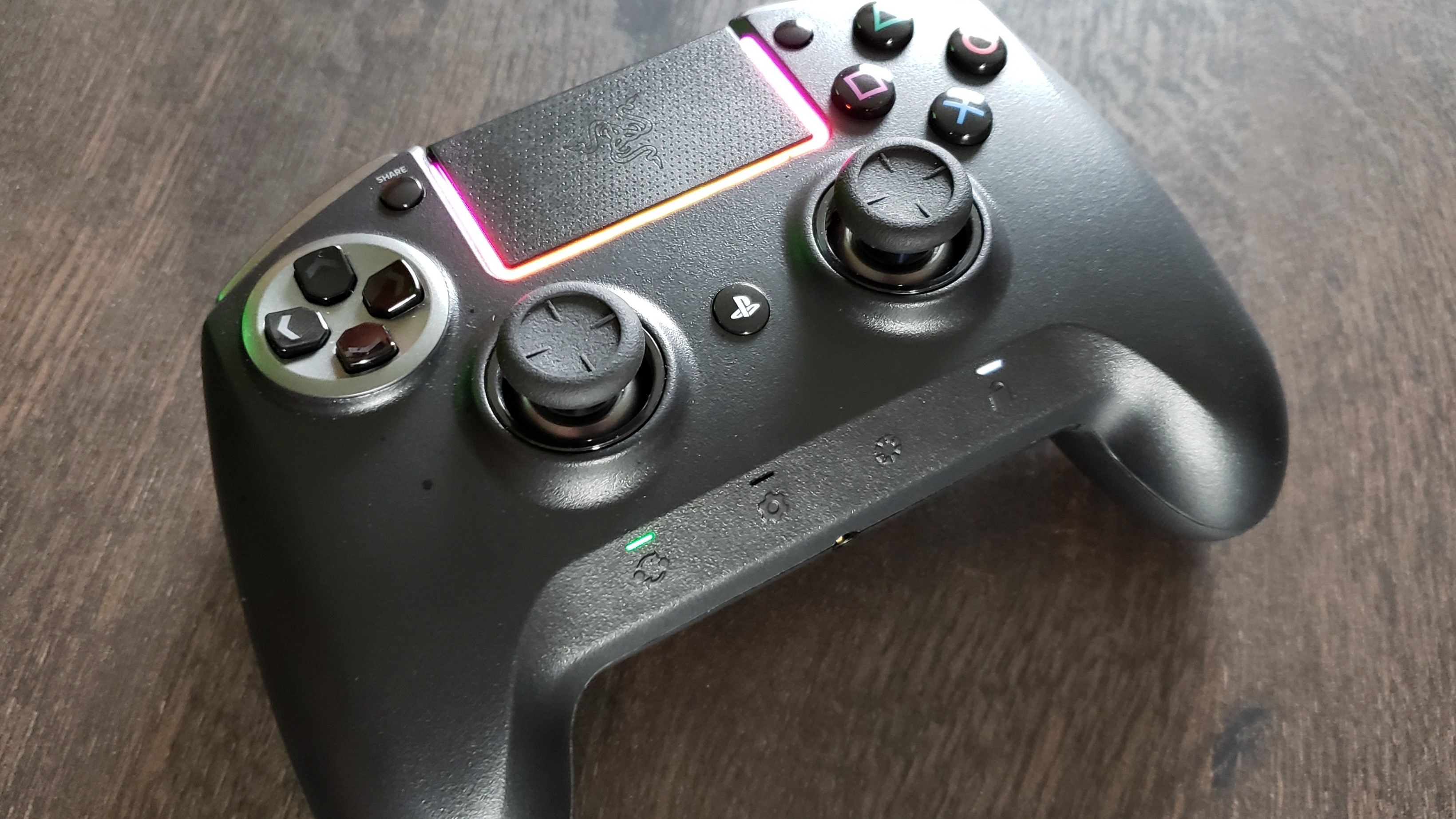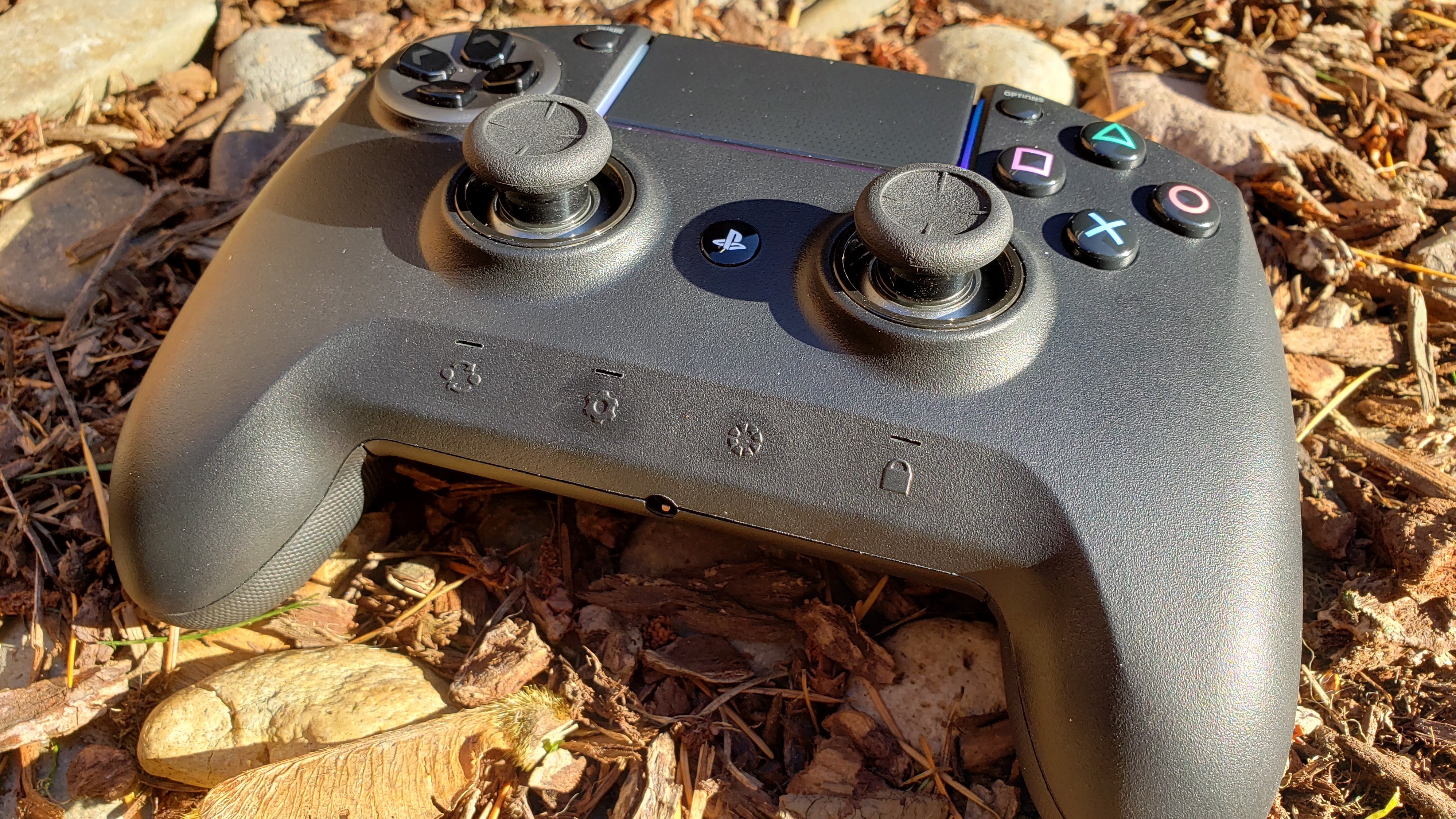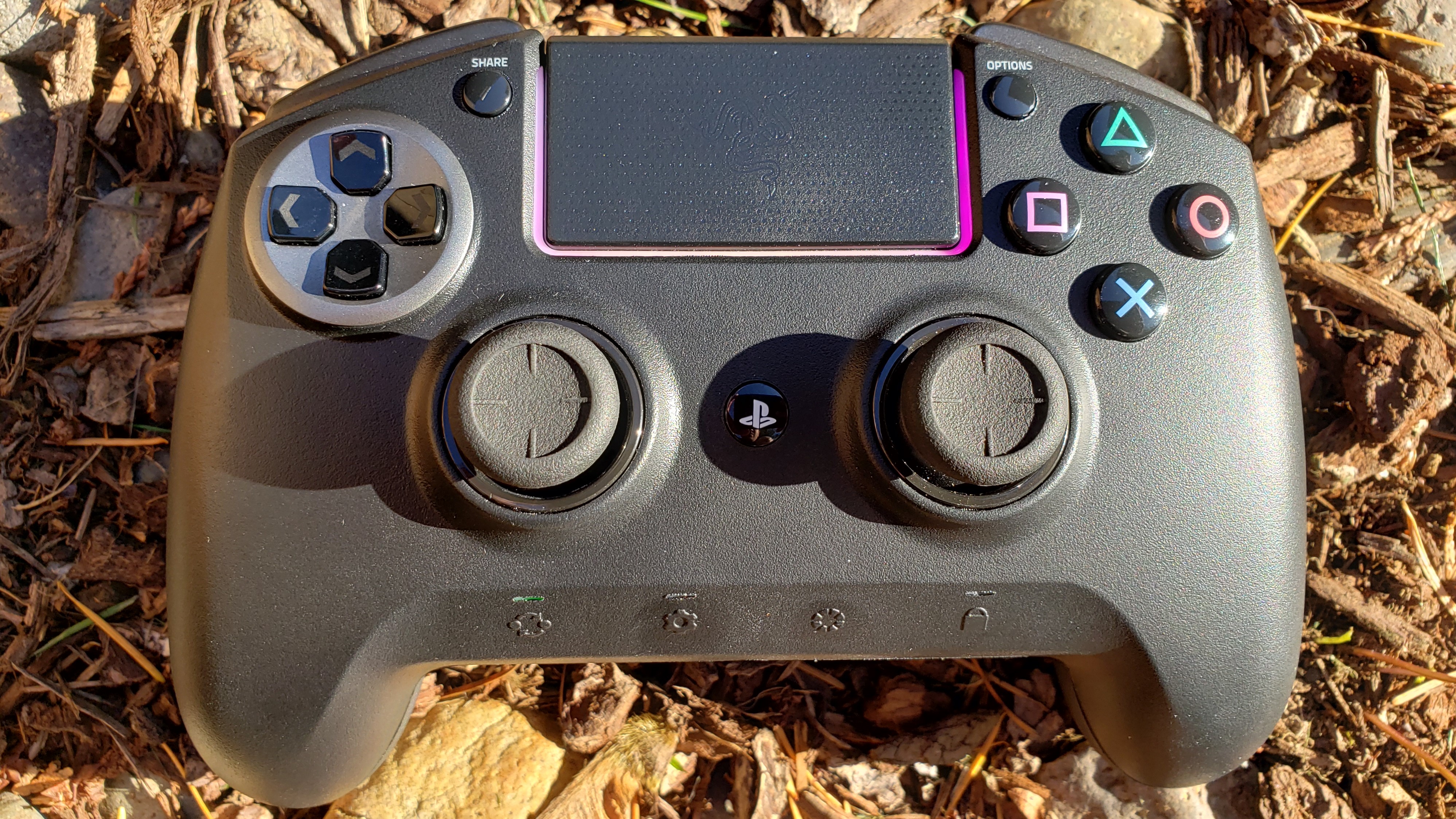Back in 2016, Razer released the Raiju, a pro-oriented (and suitably expensive) wired PS4 controller that aimed to meet the demands of a rapidly expanding esports market.
Fast forward a few years and we get the Raiju Ultimate (£199/AU$349, around $250), an officially licensed premium peripheral that improves on its ambitious predecessor’s intentions in almost every way.
Most notably, it adds wireless Bluetooth functionality, but strangely, it’s this casual new feature that ultimately stumbles, tripping up the otherwise flawless performance of this promising accessory.
Design
The first thing you’ll observe about Razer’s Raiju Ultimate is how significant it feels in comparison to other PS4 offerings, like Sony’s standard DualShock 4, or even SCUF’s comparably high-end Vantage: it weighs in at a noticeably hefty 352 grams/0.77 pounds, and it’s immediately apparent how dense and physically solid this peripheral is. Unfortunately, you can’t adjust the mass of of the Raiju Ultimate like, say, Nacon’s Revolution Pro 2 controller, so if you’re not a fan of heavier accessories, there aren’t any swappable weights to change out.
The good news is that, if you do enjoy a gamepad that feels like it would probably still function after being dropped from a California Redwood canopy, then the Ultimate has you covered (NOTE: Don’t do this). Spin it around to the back and you'll find a nice rubberized grip coating on the handles.

With its traditional side-by-side analog sticks, the Raiju Ultimate is decidedly more DualShock 4 than Xbox One gamepad, a design choice that honors traditional PS4 input layout, but is sure to disappoint gamers who prefer Microsoft’s off-kilter alternative (for those players, the cheaper Raiju Tournament Edition is highly recommended). The metal sticks feel absolutely sublime, though they may come across as a bit loose to some - it’s not that whipping back to center is delayed or anything, but they do reset in a slightly relaxed manner, especially when compared to options like SCUF’s Vantage or even Sony’s pack-in controller.
Magnetized thumbstick tops can easily be pulled off and switched out for any of the included concave or convex rubberized options, even one that adds some nice height to the mix. The same goes for the two pack-in directional pads, though each possess a sort of cheap plastic rigidity, so neither feel ideal.
Conversely, the Mecha-Tactile face buttons, as well as the Chroma-outlined touch pad, are a pure joy to press. Honestly, it’s difficult to use anything else after experiencing the clicky goodness of the Ultimate’s action inputs.
Similar to the original Raiju, there are four extra multi-function buttons on the Ultimate that can be quickly programmed with either the bespoke app or on-the-fly with button combinations and vibration confirmation: M1 and M2 sit between the L2 and R2 triggers (which can be adjusted with switches to be hair triggers) while M3 and M4 have been smartly flattened and now conveniently rest toward the back of the Raiju’s handles, though during heated gaming sessions, it’s still way too easy to accidentally press them.

The settings buttons along the bottom of the controller have been transformed from an outcropped panel into a slick, more integrated membrane spread. Here you’ll find a Profile button for switching button layouts in real-time, a Configure button for connecting to the app, a Chroma input for changing the awesome integrated lighting and a convenient Lock button that disables a large portion of menu inputs like Options, the PlayStation button and all of the Raiju control panel. This is a huge improvement over the original Raiju’s rather clunky ledge panel design, and the membraned bumps feel great to push.
It’s important to note that, as of this writing, Razer doesn’t possess the license to sell this controller in the US, so until further notice, this peripheral is a PAL-exclusive. The good news is that the Ultimate will connect—both wired and wireless—with North American PS4 consoles, so it’s import-friendly. Unfortunately, no matter what region you use the Ultimate in, Bluetooth play leaves a lot to be desired, but we’ll get to that in a bit.

Setup
The free mobile app, which you can download on either iOS or Android, allows you to connect wirelessly to the Ultimate and customize its functionality, though you don’t necessarily need it to remap Multi-Fuction buttons if you’d rather just do that through the controller itself. Options, which can be individually applied to four separate color-coded gameplay profiles (Shooter, Fighting, Sports or Racing) include features like analog stick sensitivity, vibration motor strength and Chroma lighting preference. Once you program a profile to your liking, it can be quickly toggled while gaming through the Profile control panel button directly on the Raiju.
Unfortunately, you can’t remap inputs like the face buttons or shoulder triggers, only the Multi-Functions, at least at this moment. Additionally, you can see which firmware version your Raiju is running on the app, but you can’t update it (that requires PC access), which feels like a silly oversight.
But besides these tiny complaints, the app is solid, super simple to use and makes for fast and convenient tweaking.

Performance
On the back of the Raiju Ultimate is an easy-to-toggle switch that moves functionality between PS4 Bluetooth, wired USB and PC Bluetooth. USB mode, for the most part, works flawlessly on each platform and simultaneously charges the Ultimate while connected. Bluetooth mode, on the other hand, is a totally different story.
While very simple to pair (it only needs to be done once), actually playing games, specifically online or competitive titles, over Bluetooth can be an exercise in frustration.
There is a noticeable amount of lag, probably a good few milliseconds, when using the Raiju Ultimate in wireless mode, and this occurs on both PS4 and PC. This is especially apparent when switching between the wired and wireless modes, or swapping in a DualShock 4, which illuminates the problem with stark contrast.
This was the case over two separate review units, and that was after updating each Ultimates’ internal firmware to the latest build, a fix that supposedly addressed a nagging right-stick drifting issue that several players have been reporting. Sadly, it did little (or nothing) to change current latency problems, which, by the way, occasionally leak into the otherwise excellent wired mode. It’s not all the time, but when it happens, it’s difficult to look past.
To be fair, it seems that Razer’s software engineers are aware of the issue and they’re allegedly working on a fix. Hopefully, this is all firmware-related and can be patched out in upcoming revisions. That aside, wired play is really the only way to go with the Raiju Ultimate, despite the fact that even tethered mode still faces some weird, floating lag hiccups. An incredibly frustrating drawback to a great peripheral that practically checks every other need-it box.
Final verdict
To still be impressed with a controller despite wireless lag issues is a real testament to its overall build quality, but it’s hard to excuse amateur problems like this in such an expensive device. As a wired controller, the Raiju Ultimate is relatively tough to beat, and if shoddy Bluetooth connectivity isn’t a deal-breaker for you, then the advantages this has over a standard DualShock 4 are obvious.
Then again, at that point, you might as well just save some money and buy the feature-lite Raiju TE, or perhaps the more wirelessly competent SCUF Vantage.
If it were possible to ignore the pesky wireless Bluetooth (and occasional wired) lag, the Raiju Ultimate could have become one of the best PS4 and PC controllers on the market. Hopefully Razer can iron out its firmware issues and realize the Ultimate’s full potential, but until that point, you might want to look elsewhere for your pro-quality PS4 controller needs.
from TechRadar - Gaming reviews https://ift.tt/2R63kZC
via IFTTT
0 التعليقات: